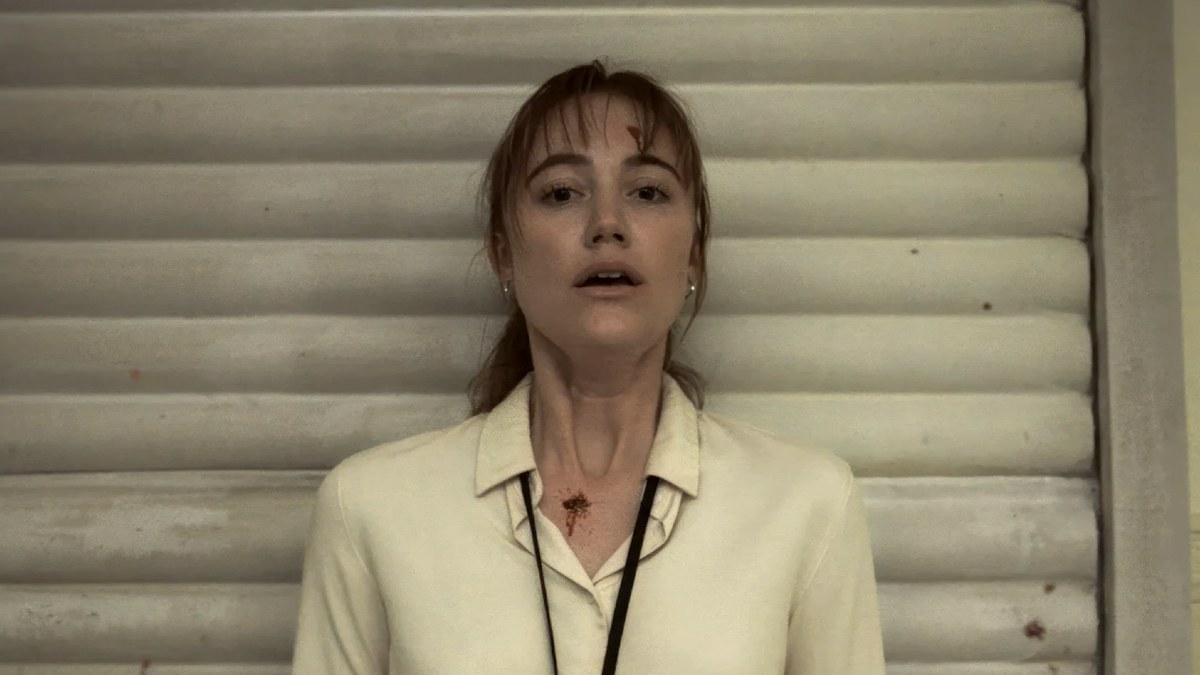
3 Psychological Tactics That 'Longlegs' Used To Disturb Its Audience
If you've seen 'Longlegs' already, then you know how creepy it is—but you likely can't explain why. Here's the psychological method behind Oz Perkins' madness.

By Mark Travers, Ph.D. | August 08, 2024
Osgood Perkins' 2024 horror, Longlegs, has taken the box office by storm—shattering records within its first few weeks, and it's showing no signs of slowing down. With a stellar cast, featuring Nicholas Cage and Maika Monroe, the film has been hailed as "a masterpiece; an unholy, horrifying confluence of high art and anxiety, a film in which every frame is a nightmare, and it's beautiful."
But what is it about this film that leaves audiences writhing in their seats from start to finish? By examining Longlegs through a psychological lens, we can begin to unravel the method behind Perkins' madness—and truly understand why this film is so profoundly unsettling.
1. The Uncanny Valley
Anyone who's seen Longlegs can attest to how insanely creepy Nicholas Cage looks in character. Longlegs' face is pale and lumpy—riddled with texture and bumps in a way that makes him look like a melting wax figurine. While the film itself doesn't provide an explanation for his disturbing appearance, the on-set makeup artist has given us some insight in a recent interview with Polygon.
Longlegs, the satanic doll-maker, supposedly underwent multiple bouts of plastic surgery to make himself beautiful for the Devil. Harlow MacFarlane, the make-up artist responsible for the brilliant result, explains that "He's in love with the Devil, and he's trying to impress the Devil, so he's gone through all these plastic surgery botch jobs to make himself look as pretty as he can for the Devil. Everything he does is for this evil force that he's trying to impress."
Whether or not the outcome met the Longlegs' twisted expectations, the on-screen result is truly horrifying: a man with a face so botched that he looks only half-human. And it is this very dissonance that leaves viewers so indescribably uncomfortable.
We know he is supposed to be human, but our eyes and minds struggle to reconcile this. This disconnect between seeing and believing gives rise to what psychological research describes as "the uncanny valley"—where objects, robots or characters that look almost-but-not-quite human unsettle us more so than entirely non-human-looking entities.
2. Genuine On-Screen Terror
Perkins had a stroke of genius when he decided to place a heart-rate monitor on Maika Monroe during her first-ever encounter with Nicholas Cage as Longlegs. In a promo-interview, Monroe explained that, "When I walked in and saw Nicolas Cage for the first time as Longlegs, that was a visceral experience I'll never forget." And the readings on her heart-rate monitor reflected this.
As explained in the promo, Monroe typically has a resting heart rate of 76 BPM. Astonishingly, during her scene with Cage, this rate more than doubled to an incredible 176 BPM. This spike wasn't the result of acting; it was pure, unadulterated fear—captured on screen in real-time. This kind of authenticity adds unparalleled layers of realism to film, and in Longlegs, it made the line between fiction and reality indiscernible.
Research from the Journal of Psychiatric Neuroscience and Therapeutics explains that, just as our mirror neurons allow us to share and mirror the happiness and sadness we see in others, the same applies to fear. And with Longlegs, the raw, genuine fear visible on Monroe's face meant that viewers didn't need to suspend disbelief. The horror of this film was so palpable that it managed to permeate real life; it was written on Monroe's face, compelling the audience to mirror the terror themselves.
3. Subliminal Imagery
According to research from the Personality and Social Psychology Bulletin, subliminal messaging and imagery in media can be processed well outside of our conscious awareness—no matter their content. Most importantly, the study found that threatening subliminal imagery (that is, dark or evil images that linger for a few seconds or less) can directly induce anxiety in viewers. This means that even when we don't consciously register these unsettling images, our brains do—and the result can be a profound sense of unease.
Unsurprisingly, Perkins cleverly exploited this psychological phenomenon to disturb his audience on a subconscious level. According to the Longlegs social media team, there are a staggering 15 shots throughout the film in which the Devil is hidden. These images are not immediately obvious, but are rather designed to be processed subliminally by the audience.
Whether you confidently noticed all these instances or not is negligible; the mere presence of satanic imagery, albeit brief, is enough to subconsciously chill you. And this experience captures the very essence of Longlegs.
Even outside of the major, horrifying moments in the film, you can't help but feel on edge. The scenes may look inconspicuous, as if nothing is awry, but a small part of you will know that something isn't right. And it's likely Perkins' persistent use of subliminal imagery that ensures that this pervasive sense of paranoia lingers—both throughout the film and once it's over.
The brilliance of Perkins' direction lies in this blend of overt horror and covert trickery. With this sinister combination, he ensured that the fear and anxiety induced by Longlegs was transferable in every single frame. His absurd and calculated utilization of psychological manipulation is what makes Longlegs not just a film, but a haunting experience that will stay with you long after the credits roll.
Do horror movies thrill you more than they chill you? Take this test to find out if this fascination is driven by morbid curiosity: Morbid Curiosity Scale
A similar version of this article can also be found on Forbes.com, here.
